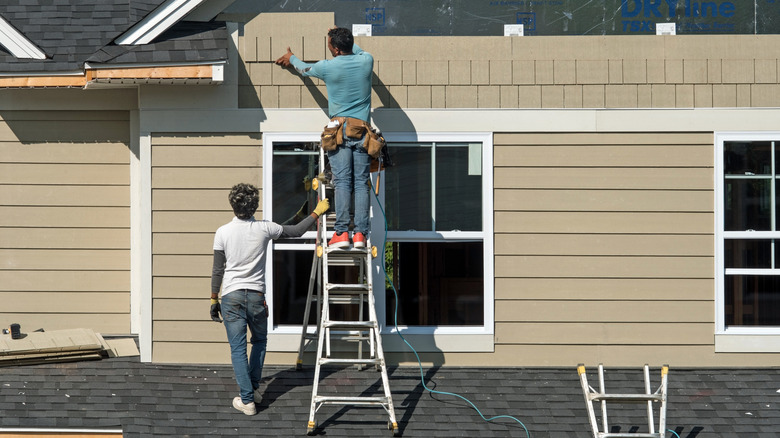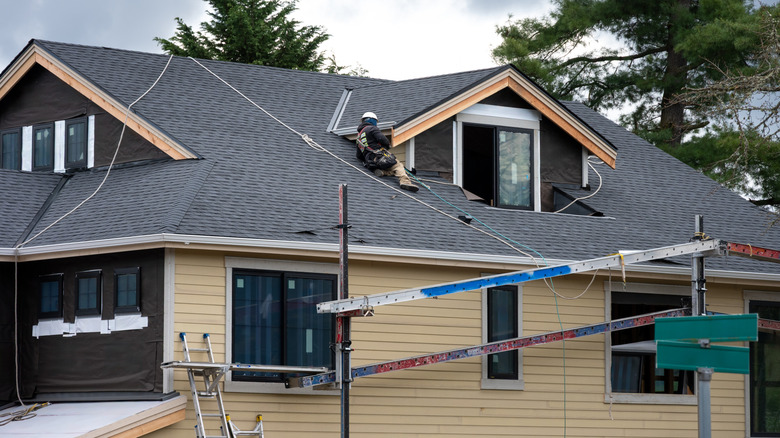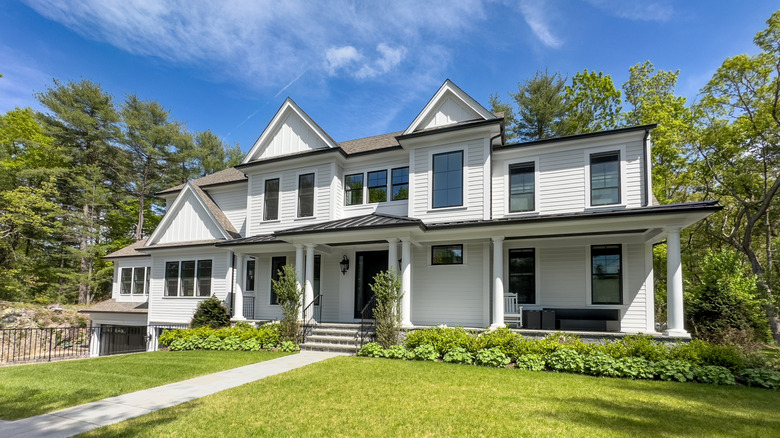Fiber Cement Siding Is Becoming More Popular - But Is It Right For Your Home?
Replacing siding is a major task. But whether you moved to a house that didn't get the maintenance it ought to or there are signs that your siding is getting old, it's a job many homeowners have to face eventually. So, then, it's a question of investigating the many different types of siding on offer and getting quotes from installers.
Fiber cement siding has become an increasingly popular option. To assess whether it's right for your home, it's important to know the pros and cons involved in using it. These include everything from the styles and color choices available, its durability, and potentially higher cost than other options.
The main ingredients in fiber cement siding are Portland cement (a key component in concrete) and wood pulp, or cellulose fibers from plants like bamboo or hemp. Fly ash or silica sand may be added, and manufacturers might also have their own "secret ingredients" to bind and strengthen the finished product. The bottom line is that fiber cement siding is tough and long-lasting and could well be right for your home, but let's take a closer look.
There are many good reasons for choosing fiber cement siding
Vinyl is probably the most common siding used in the U.S. But its durability may not be what you hoped for and is one of the disadvantages of vinyl siding you may wish you knew sooner. Fiber cement, by contrast, is extremely hard-wearing. Some popular brands come with a 30-year warranty when installed professionally, but might actually be expected to last 50 years or more.
Unlike vinyl, which melts relatively easily, fiber cement has the same kind of fire resistance as brick. It can be textured to look like wood (or shingles) but won't warp or rot. It's also highly pest-resistant. Insects like termites and carpenter ants won't bore into it, and rodents won't chew at it.
Fiber cement siding offers tremendous decorative versatility. We already mentioned the wood effect, but it can also mimic stucco or be smooth. It is available in a wide range of colors and can be painted if you want something unique. Lastly, it requires very little maintenance beyond an occasional wash with a hose or pressure washer to prevent mold taking hold.
Why you might want to give fiber cement siding a miss
Enthusiastic DIYers might hope to save money by installing fiber cement siding themselves, but not getting it installed by professionals is one of the mistakes everyone makes when buying siding. Among reasons to leave it to contractors is the weight, which is around 300 pounds for a 10-foot by 10-foot area. Although it's no heavier than brick or stone siding, panels can be brittle and could crack or chip if dropped.
There are also potential health issues. Depending on the construction, fiber cement siding can release silica dust when cut. This is associated with a dangerous lung disease called silicosis, so breathing protection should always be worn. Things like nail type and size, sealing, and caulking are all challenges involved when fitting fiber cement siding, so leaving the job to those with the proper experience is strongly recommended.
Finally, there's cost. Both the price of the fiber cement siding itself and that of installation are around twice that for vinyl siding. However, when life expectancy is taken into account, the differences are far less dramatic. Deciding on the best siding for your home is never easy, and vinyl is undoubtedly the budget-friendly option. That said, on the balance of pros and cons, fiber cement siding does make a strong argument for being the right choice for your home.


